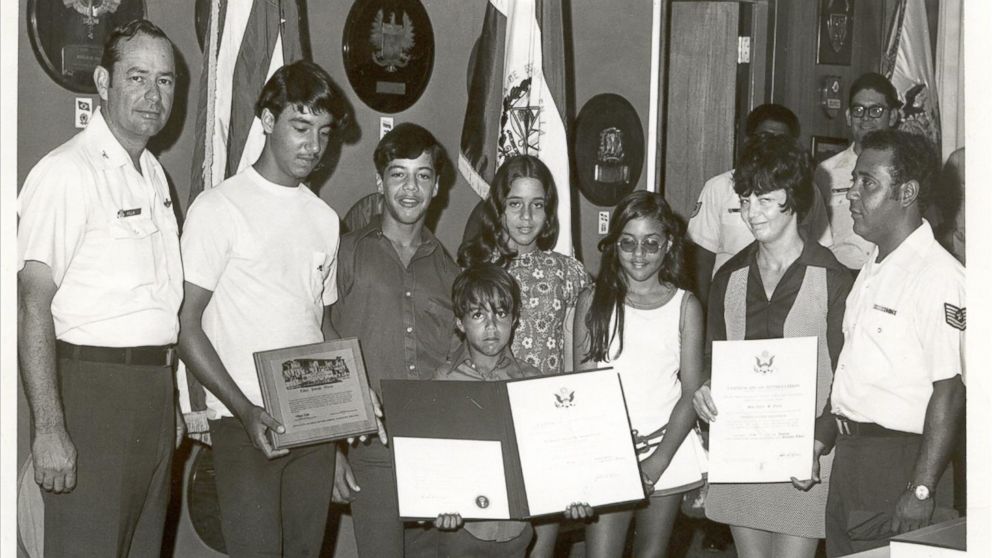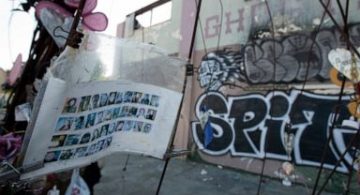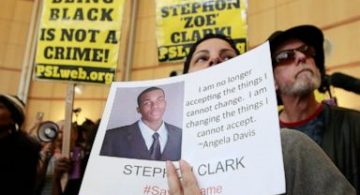
Charlie Otero was 15 years old the day his parents and two of his siblings were murdered by the notorious BTK serial killer.
“It was just like if you ripped my chest open and tore my heart out,” Otero told ABC News’ “20/20.”
For more than 30 years, the BTK killer haunted Wichita, Kansas, torturing and murdering 10 people. He was known for taunting local media and police with letters and phone calls, seeking recognition and detailing his horrific crimes.
The abbreviation “BTK” stands for “Bind, Torture, Kill,” a moniker the killer had given himself that indicated what he had done to his victims.
Watch the full story, “My Father, BTK,” THIS FRIDAY, Feb. 1 at 10 p.m. ET on ABC.
In 2005, authorities were able to identify the BTK killer as Dennis Rader, a married father of two, who was the president of his church, a Boy Scout troop leader and an Air Force veteran. Rader, now 73, is currently serving 10 consecutive life sentences without the possibility of parole after pleading guilty to 10 counts of first-degree murder in 2005.
Rader’s killing spree began in January 1974, when he targeted the Otero family, who had been living in Wichita for less than six months. Julie and Joseph Ortero had five children, and their older children had gone to school that day, leaving the two younger ones, 9-year-old Joey and 11-year-old Josie, at home with their parents.
“My father was a really outgoing, jovial kind of guy,” Charlie Otero said. “And my mom, a very caring, loving Catholic woman. She was a mother first, you know.”
When Charlie Otero and his siblings came home from school that day, they found their dog Lucky was outside, which he said never happened.
“I went to the back door of the kitchen entrance and opened it up and walked inside, and I looked at the stove. And my mom’s purse was on the stove, flipped up and disheveled, stuff thrown everywhere. That wasn’t typical of my mother at all. She was a very tidy person and the kitchen never looked like that. So I yelled out. I said, ‘Is anybody home?'” Charlie Otero recalled.
Charlie Otero says one of his siblings then yelled to him, “Charlie, come quick. Mom and dad are playing a bad trick on us!”
“I ran down the hall, went in their bedroom and saw my mother on the bed, my father on the floor, and my heart just got ripped out of my chest. My life changed instantly,” Charlie Otero said. “When I looked at my mother, she was tied up. It didn’t even look like my mother. My dad, he had a belt wrapped around his neck.”
They called the police from a neighbor’s house, and when police arrived, they discovered the bodies of 11-year-old Josie in the basement and 9-year-old Joey in another room.
Charlie Otero said he didn’t know his younger brother and sister had also been killed until a chaplain and police officer told him at the police station.
“I thank God every day for the fact that I didn’t find Joey and Josie, because I don’t know how I would have handled it,” he said.
Later that year, Rader killed 21-year-old Kathryn Bright, and in 1977, he killed Shirley Vian after locking her three children in a bathroom. On Dec. 8, 1977, Nancy Fox, a single woman who worked two jobs and lived alone in a duplex, became victim number seven.
“She was very outgoing, very friendly,” Nancy Fox’s sister, Beverly Fox, told “20/20.” “She was one to speak her mind. She didn’t keep quiet.”
Beverly Fox said her mother told her over the phone what happened to her sister.
“That kind of stuff happens to somebody else, but … not to someone in your family,” said Beverly Fox.
After the murder, Rader found a phone booth the next day and reported the murder of Nancy Fox to police.
“You will find a homicide. 843 South Pershing. Nancy Fox,” Rader was recorded telling the dispatcher.
Beverly Fox said police had her and other people listen to the recording to see if they could recognize the voice, “but it wasn’t a voice that any of us recognized.”
“In some respects, knowing that it wasn’t somebody we knew was a relief, but at the same time, now you’ve got this crazy person out there that’s doing these atrocious things to other people,” Beverly Fox said. “What did she do to him to make him want to do this to her?”
Years passed, and in April 1985, Rader murdered his eighth victim and neighbor, Marine Hedge, who lived just six doors down from him and his family. In September 1986, Rader murdered Vicki Wegerle.
Dolores Davis became Rader’s 10th and final murder victim on Jan. 18, 1991.
“My mother was a very caring, giving type of person,” Jeff Davis told “20/20.” “She was just a very kind and considerate and loving person.”
Dolores Davis, 62, was retired and living alone. Rader entered her home after throwing a cinderblock through a sliding glass door.
“She’s, of course, going to be immediately running up there. That’s when she sees him — the monster – standing there,” said Jeff Davis.
After he killed Dolores Davis, Rader dumped her body by a bridge. Several days later, a boy walking his dog found her body.
“My mother had been a beautiful person inside and out, and she’s disregarded like a bag of garbage,” Jeff Davis said.
More than a decade later, police were finally able to match DNA found at the Otero crime scene with that of Dennis Rader. On Feb. 25, 2005, police arrested Rader, who had been on his way home to have lunch with his wife. He confessed to the crimes while in police custody.
Charlie Otero said he had been landscaping a yard, pulling bushes out of the ground, when he got the call from his sister that Rader had been arrested.
“She said, ‘They got him.’ I said, ‘Yeah, right.’ She goes, ‘No, they really got him. They swear it’s him,'” Charlie Otero said. “I said, ‘Okay,’ and I put the phone down. And I remember bushes flying 10 feet high over my head. I was ripping them out of the ground.”
“I had no idea ’til the next morning when the news blitz came on and the phone started ringing,” Davis said. “They showed his picture … And I thought, ‘That is the devil’s agent that killed 10 people, are you kidding me?'”
Rader pleaded guilty on June 27, 2005, to 10 counts of first-degree murder. In court, Judge Greg Waller asked Rader to take him through each victim and describe what he did. For nearly an hour, Rader calmly recounted each of his 10 murders to the court.
“It was hard to stomach,” Davis said of hearing Rader speak in court. “He’s up there in front of all these people, admitting these unspeakable crimes. And he’s giving the judge a lesson in serial killer 101. That’s his arrogance.”
“When Rader described in court how he killed my family, it was the first time I’d ever heard how they died,” said Charlie Otero. “When he said that some of my mom’s last words were:’May God forgive you for that,’ it was like breaking my heart again. I could not believe that my mom was so beautiful and gracious in such a traumatic moment.”
Beverly Fox agreed, saying “it didn’t seem to bother him, the impact, what he’d done, how he disrupted all these lives.”
“I think what struck us all was there was no remorse in his voice. He seemed to take pleasure in all the things he’d done,” Beverly Fox said. “You don’t comprehend that people feel or act that way.”
At the end of Rader’s sentencing hearing, families of the victims were allowed to read victim impact statements.
“For the last 5,236 days, I have wondered what it would be like to confront the walking cesspool that took my mother’s precious life,” Davis said in his statement.
“I spent months working on that victim impact statement,” Davis recalled. “I stared at him the whole time. He didn’t have the guts to look at me.”
“And to this day I can’t tell you what I said. I know it’s out there. But I’m glad I did it,” said Fox of her impact statement.
Davis said each of the victims’ families knows the special kind of horror that they experienced.
“I look at all those other survivors — Nancy Fox’s folks, wonderful people — the Oteros and what horror they went through, and I know their stories,” said Davis. “And I look at all those people and lives destroyed, knowing that, you know, one of God’s creatures, as we say, was responsible for all this. It’s real hard to swallow. It’s just real hard to swallow.”
Watch the two-hour special report on “20/20” FRIDAY, Feb. 1 at 9 p.m. ET on ABC.





